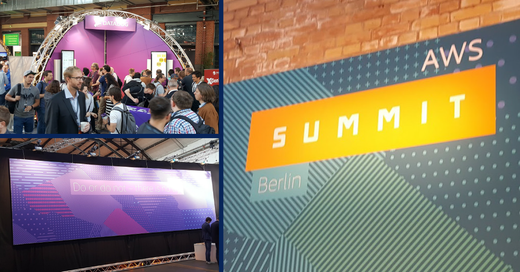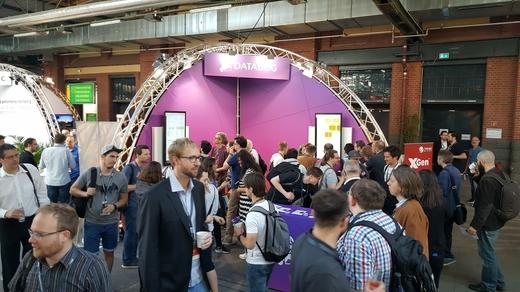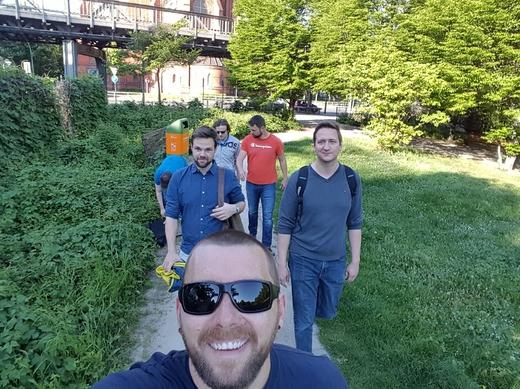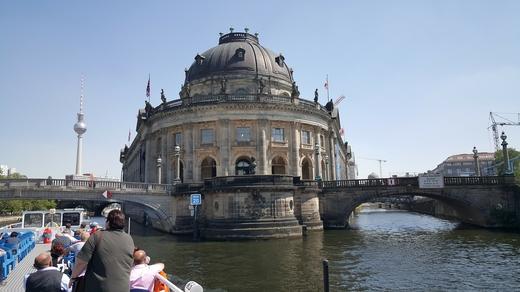
At the keynote, there were some pretty amazing statistics about how much AWS has grown in the last year. The kind of growth that they have at their size really shows how much cloud computing is growing in general. Last year they grew another 43% (year on year growth) and at the level they are doing business, that’s really saying something.
Some other portions of the keynote that were interesting is that the Deutsche Bahn is now using AWS services heavily as a way to mitigate risk since they don’t have to run all of the failover equipment or worry as much about making everything redundant. They also decided to go with AWS since they didn’t want to have to invest in the infrastructure that would be necessary for renewing their infrastructure.
One of the first presentations that I went to was about how a company is trying to speed up the business of finance by using AWS’s image recognition software. Apparently much of the transfer of knowledge in finance is done through PDF’s that are then sent to other companies and then someone has to enter the data contained in the PDF by hand into their database or software. The first person in the chain uses their proprietary software to come up with some financial figures and then gives it to the next company where they in turn do the same and at each stage, there is manual data entry involved.
This is obviously incredibly inefficient and so the company who did the presentation is using AWS’s AI to process the documents into a format that can then be given to the next company as raw data that can be used directly, thus cutting out the step of manual data entry.
I also attended another presentation about how to use GraphQL to retrieve data in a much more efficient way and the presenter showed an example by building a serverless application with Lambda to show it. With GraphQL, you can use queries that are much more efficient than the traditional RESTful approach since you can use it like a query language with an API and only get back the results that you need rather than retrieving all of your data and then performing filters on it.
This was particularly interesting for us to watch since we are also using a serverless approach for our new PRTG on Demand product. Also, to see someone else set up a functional Webshop where you could buy something within 30 minutes was really neat.
The last presentation that really made an impression on me was about how developers at AWS develop and use their DevOps tools effectively to remain agile. The presenter started by talking about the “Two Pizza” philosophy from Jeff Bezos that has made its rounds around the internet but he also delved a bit into why this is important at the company.
He showed how the rate of development has speed up at Amazon despite the size because teams are able to use their own tools that work for them and are working in an agile way that allows them to develop smaller pieces of a much larger puzzle instead of dealing with the overhead of working on a monolithic system. This is important for them since bugs can be fixed faster and new features can also be implemented faster.
Instead of having a release cycle of every few months, they are releasing new code many times a day. Using tools like Continuous Integration / Continuous Deployment allows them to make sure that their code is working well before it goes into the product and it also makes the developers more conscience of the code that they are writing since they see and are responsible for the results immediately, instead of weeks or months later.
The summit itself was quite enjoyable and had really good information about some of the new things that are being worked on at AWS as well as some cool presentations about how people are using their services to build modern software. We were really stoked to find out that what we are using for our new PRTG on Demand project is really on the cutting edge and that we are on the forefront of how modern software is developed.
The team also had a great time in Berlin and on the way out to the event and the day before we had some time to get to know each other better and discuss the way that we work together. Since there were people from Systems Administration, Business Information Systems and PRTG development all on the trip, it made for some interesting conversations about what it means to be agile and what philosophies we each use for projects and development.
I really noticed that the startup culture in Berlin is intense with every block having at least one coffee shop containing developers hacking away at the next generation of technology. The clash of modern and classic is really in evidence in the architecture of the city as well as the culture where you see opera theaters next to ultra-modern clubs and traditional beer gardens next to craft breweries. From the people that we spoke to, it seems like this dichotomy nurtures innovation while remaining practical and down to earth, which is often a hard combination to find.
 Published by
Published by 







.jpg)






